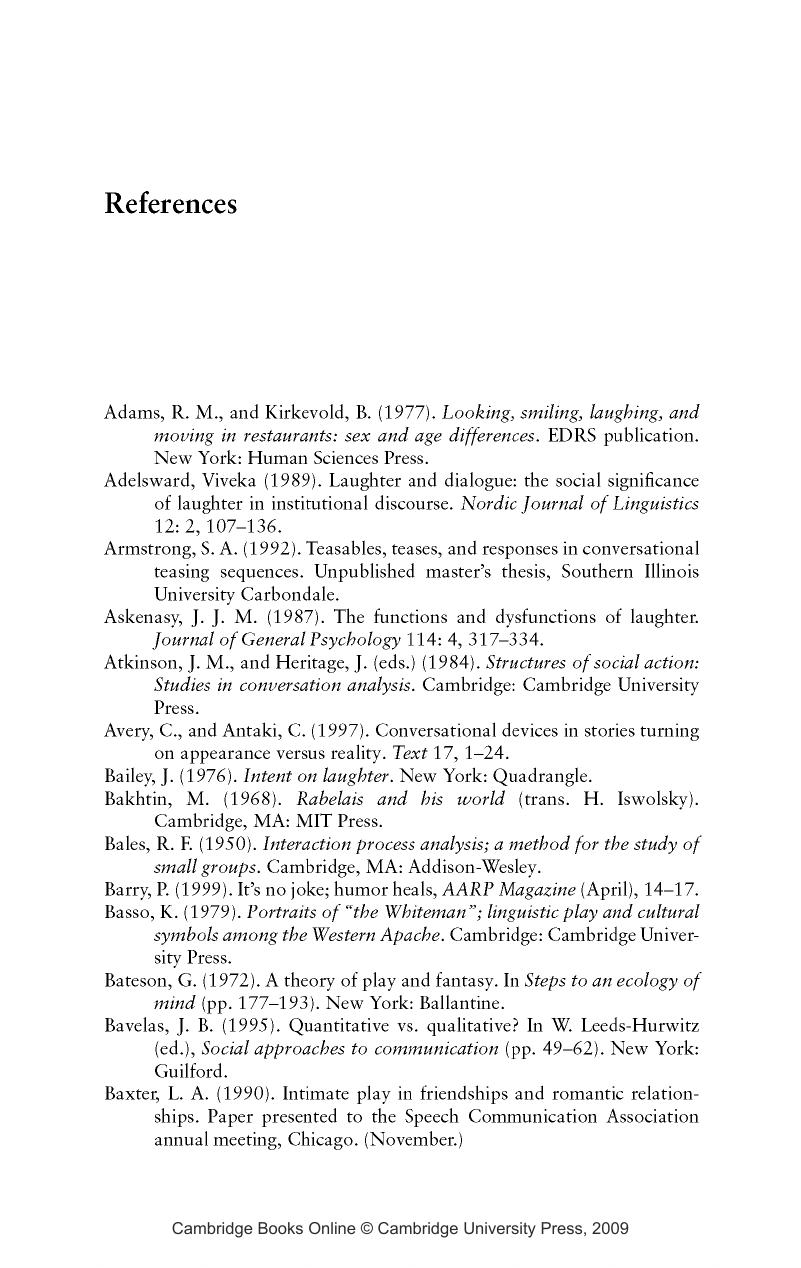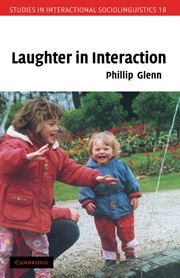Book contents
- Frontmatter
- Contents
- List of figures and tables
- Acknowledgments
- Transcription symbols
- Introduction
- 1 Towards a social interactional approach to laughter
- 2 Conversation analysis and the study of laughter
- 3 Laughing together
- 4 Who laughs first
- 5 Laughing at and laughing with: negotiating participant alignments
- 6 Laughing along, resisting: constituting relationship and identity
- 7 Closing remarks
- Notes
- References
- Index
- References
References
Published online by Cambridge University Press: 08 August 2009
- Frontmatter
- Contents
- List of figures and tables
- Acknowledgments
- Transcription symbols
- Introduction
- 1 Towards a social interactional approach to laughter
- 2 Conversation analysis and the study of laughter
- 3 Laughing together
- 4 Who laughs first
- 5 Laughing at and laughing with: negotiating participant alignments
- 6 Laughing along, resisting: constituting relationship and identity
- 7 Closing remarks
- Notes
- References
- Index
- References
Summary

- Type
- Chapter
- Information
- Laughter in Interaction , pp. 177 - 187Publisher: Cambridge University PressPrint publication year: 2003



